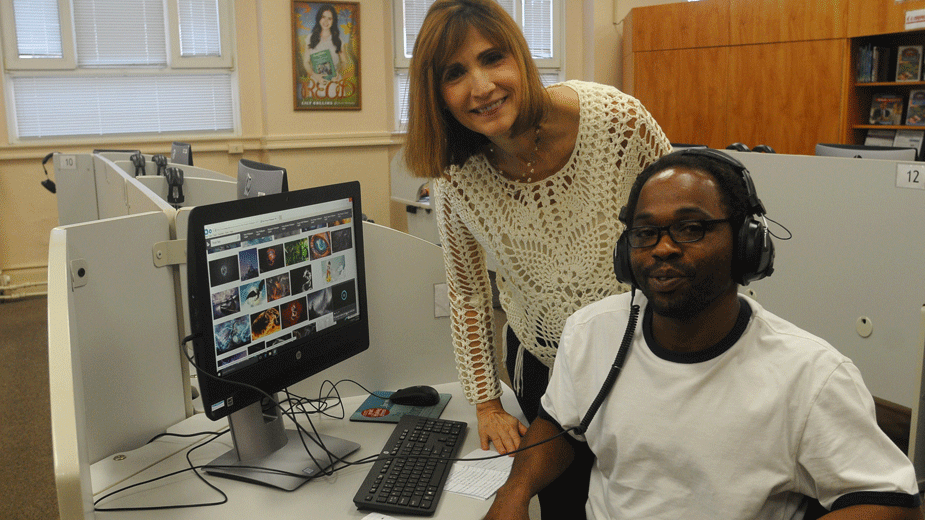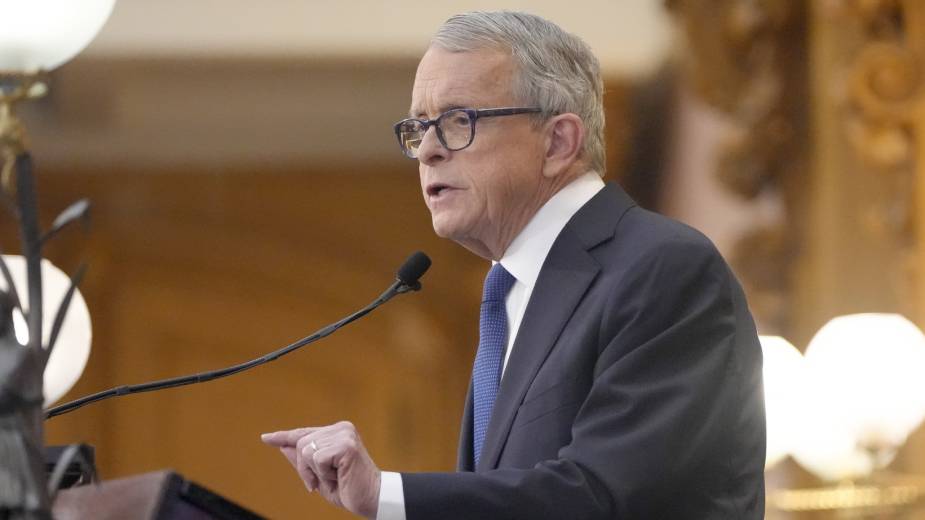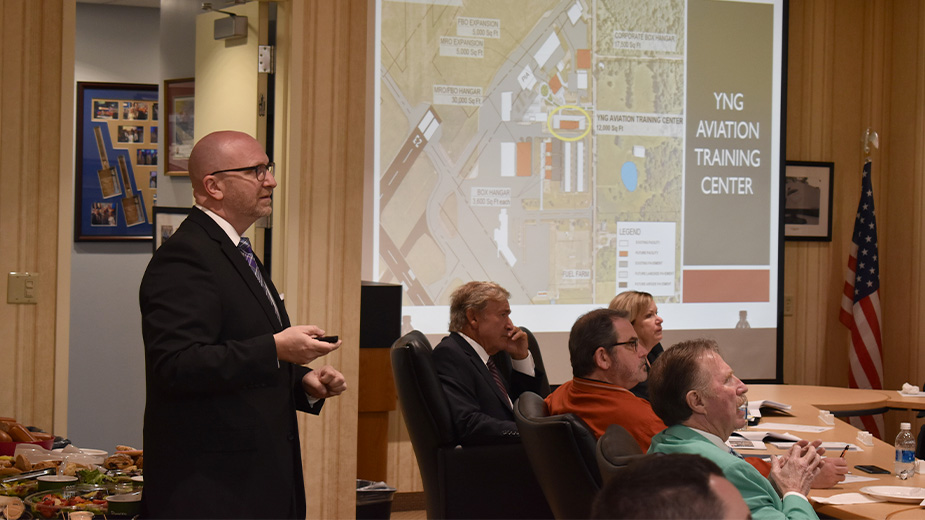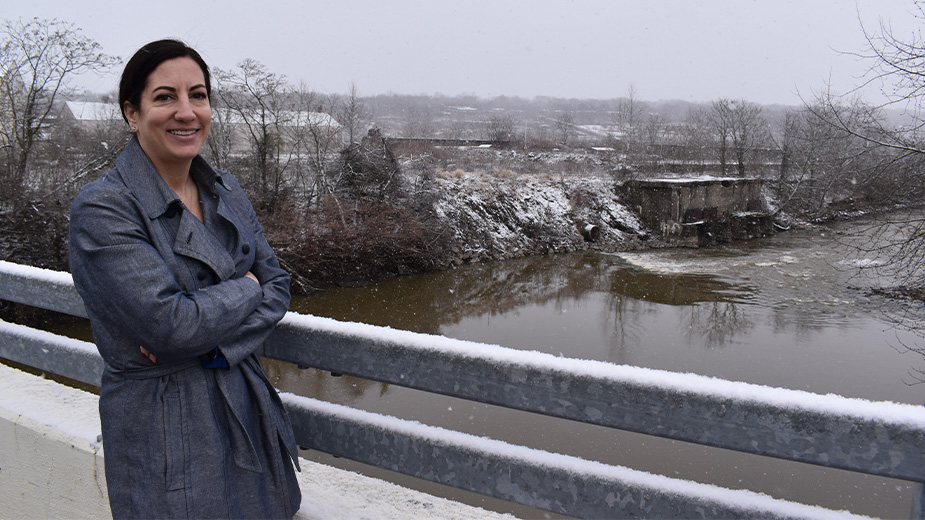The Digital Divide Hits Home
YOUNGSTOWN, Ohio — Nearly every day, Antuan Mack of Youngstown makes his way to the Main Branch of the Public Library of Youngstown and Mahoning County to grab a seat before one of the 37 computers available to patrons.
There, Mack listens to music, reads books, watches DVDs, visits news websites and has applied for jobs through the library’s computers.
“This is the only access I have,” he says as he sets down a pair of headphones. “I don’t own a computer and this is my hangout spot.”
Mack, who works for Help Hotline, says he makes it a point to visit the library daily to connect with the digital world, a world that for some in the inner city and rural communities might as well be on a planet in another solar system.
Despite efforts to improve broadband access in Ohio, a sizeable number of residents – many of them in the agrarian and rural areas of the state – lack adequate internet service in their communities. And although all of the urban regions of the state have broadband coverage, those who live in distressed neighborhoods and earn low incomes can’t afford the service.
Such is the “digital divide” in the Mahoning Valley, a phrase that today has as much to do with socioeconomic disparity as it does with the availability of broadband networks throughout the area.
“There are people lined up in the morning outside. And most of them are here to use the computers,” says Josephine Nolfi, director of programming and youth services at the Youngstown Public Library. “We are extremely busy, especially in locations where income may prevent people from having computers in their home.”
As of Sept. 30, there were 128,931 distinct sessions registered across the library system’s 221 desktop computers, Nolfi reports. Students at work on homework projects can be found in the branches after school, while others use the library computers to conduct job searches and apply for positions online.
Once that student or job seeker returns home, access to the internet ends. The question now is how to provide continued service once that patron physically leaves the library? The answer might be found in a program that’s been rolled out in major markets across the country.
The premise is to treat broadband WiFi connectivity as if it were a book, CD or DVD that you could check out of the library. Two years ago, the New York Public Library launched an effort to lend mobile “hotspots” to households not served by an internet provider. A survey the library conducted of those who use its free computer services found that 55% said they lacked broadband access at home. When a household’s income dropped to $25,000 or less, that number climbed to 65%.
Hotspots are devices that plug into a laptop, smartphone or tablet and enable these computers to access a WiFi network contracted by the library. The devices are lent to patrons for a fixed period of time, just as a customer would check out a book. The Chicago Public Library system recently launched a similar program where library users can not only check out hotspots, but also a Chromebook – a laptop powered by Google and that uses the Chrome search engine.
The Youngstown Public Library system is contemplating a program similar to New York and Chicago’s, but it remains in the preliminary stages, says Janet Lowe, library spokeswoman.
Other initiatives to extend computer services to more city residents are evident among social and cultural organizations.
“We have 10 computers in our lab,” says Mary Lou Reyes, director of the Hispanic American Civic and Cultural Organization, or OCCHA, a multicultural center on Shirley Road in Youngstown. “People use them for research, job searches, job applications, Social Security. There are a lot of things done online,” she says.
Students and adults, mostly from Campbell, Boardman and Youngstown, use the computers at the center, Reyes says, because many lack internet access at home. There is no charge to use the computers.
Elsewhere, neighborhood organizations are making strides to not only improve digital access, but to upgrade basic computer literacy as well in the inner city.
“The ultimate goal is to get them involved in STEM education and future occupations,” says Patrick Kerrigan, executive director of the Oak Hill Collaborative. STEM, an acronym for science, technology, engineering and mathematics, is today essential to academic and professional advancement for young people, he says.
To address this issue, the Oak Hill Collaborative has sponsored STEM-related workshops that draw young people mostly from the inner city and the Oak Hill neighborhood on the South Side. This year, the organization has hosted courses for kids where they are taught to build their own computers from a Raspberry Pi kit.
“We hold classes where they can build their own computer and take it home with them,” Kerrigan says. “By building it from scratch, they learn the intricacies of the computer and learn programming.”
About a dozen students sign up for each course, Kerrigan says. “It’s new to them, but they pick up amazingly quickly,” he says. “It’s important that they have familiarity with electronics and computer equipment since everything in their lives is going to be touched by computers or some form of electronics.”
While teaching young people the fundamentals of computer technology is essential, the greater challenge is bringing that internet connection into the home. And, the discussion has shifted to what should be considered adequate broadband service because more information and services flow across fiber lines than ever before.
“It used to be real easy defining ‘digital divide,’” says Stu Johnson, executive director of Connect Ohio, a nonprofit organization that advocates programs to encourage internet connectivity and adoption throughout the Buckeye State. Several years ago, the benchmark for adequate broadband speed was about three megabytes per second. But last year, the Federal Communications Commission recommended that service should be measured at download speeds of 25 megabytes per second.
About 98% of Ohio is covered with download speeds of at least 1.5 megabytes, including mobile, Johnson says. “Still, 2% of 11 million people is a lot,” he notes. And, when you take mobile broadband out of the equation, the percentage drops to about 90%.
Further, higher-speed service is much harder to come by, especially in the more rural communities, Johnson says. In Columbiana County, for example, the number of households without internet speed of at least 10 megabytes per second is larger in the far southwestern portion of the county compared to cities, although ample mobile broadband service is available. In some of the more remote areas of the state – especially in Appalachia – there’s little or no availability for broadband, largely because the demand and degree of use doesn’t justify running fiber connectivity to these areas.
“For rural areas, the barrier is access,” Johnson says. “For urban areas, it’s cost.” Although broadband service is available in all urban centers of the state, it’s not unusual to find adoption rates – that is, the number of households paying for adequate broadband coverage – at roughly half. “The access is there, but many people don’t have $40 a month to pay for it.”
Stepping up connectivity in some of the more economically distressed regions of the state is also imperative, because attracting new economic development projects and job opportunities today almost certainly depend on whether a community has access to this service.
“Before any company comes to the table, they’ve already checked out broadband access and the level of the skilled workforce,” Johnson says. While there’s no guarantee that a company will select a site because it has strong broadband service, it’s almost certain that a company will pass it by if a community lacks access.
“The question is, should we intervene?” and supply this service to the underrepresented areas, Johnson posits. The solution, he adds, would most likely be a public-private partnership and a program “that makes sense for everyone,” meaning both providers and consumers.
As such, Connect Ohio is soliciting proposals for a program it will select in five cities of the state and then develop a comprehensive plan to improve internet access and use, says Paul Carlson, a former administrator for the city of Columbus who is helping Youngstown put together its proposal. “My interest is to develop a strategic plan for broadband,” he says.
Carlson, instrumental in the campaign to elect Columbus the No. 1 “Smart City” in the world in 2015, is working closely with the Oak Hill Collaborative and other organizations to help prepare the Youngstown proposal, says Oak Hill’s Kerrigan.
“We’re confident we’ll be selected,” Kerrigan says. “We’ve demonstrated the need.”
Pictured: The Public Library of Youngstown and Mahoning County’s Josephine Nolfi helps Antuan Mack, who does not have computer or internet access at home.
Copyright 2024 The Business Journal, Youngstown, Ohio.



